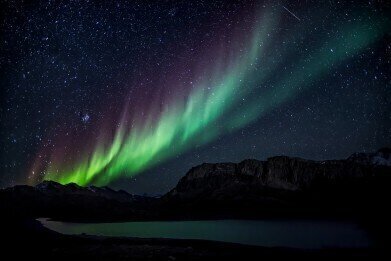Environmental laboratory
Why is NASA Shooting Rockets into the Northern Lights?
Mar 07 2015
The Aurora Borealis, otherwise known as the Northern Lights, have become something of a tourist attraction in recent years. Cruise ships deliberately sail towards the Arctic Circle in the hope that their passengers will be able to catch a glimpse of the dancing lights, whilst fishing boats in local towns also offer moonlight guided tours to the most likely spots. Just as with any natural occurrence, there are no guarantees of seeing the lights or for how long, but people are still just as willing to take the chance.
Among the many who are hopeful that the lights will “behave” in order that they can be studied, is a team from NASA who recently undertook a project whereby they are firing rockets directly into the Aurora Borealis itself.
The Reasons
As the millions of people who have seen the Northern Lights, either in the “flesh” or as a recording, will be aware, the lights appear to dance across the sky. As part of their project, the scientists hope to uncover the reason for the dancing, or the appearance of dancing.
Scientists hope that if they can establish the way that the Aurora moves, they can learn more about solar radiation and weather. Their belief is that Aurora’s move in a similar way to solar storms. These solar storms can have an effect on satellites and our electrical systems down on Earth so it stands to reason that by learning all they can about the movement of the Northern Lights, the research team can apply that knowledge to similar systems.
Similarly, the recent launch of a deep space satellite called DSCOVR (short for Deep Space Climate Observatory) will enhance environmental monitoring capabilities and issue Earth with faster and more accurate warnings of imminent solar storms. For more information on this topic, read this new story: New DSCOVR Satellite Delivers Earlier Solar Storm Warnings.
What they can learn
This is by no means the first project which has seen rockets being fired into the Aurora Borealis. Indeed, similar projects have taken place for the past 30 years and within that time, the researchers have been able to learn exactly what causes the light phenomenon.
Knowing what causes the lights in the first place is fundamentally different to knowing why they move and change in a certain way. It is hoped that through the new project, which will see a single rocket carrying six smaller rockets being fired into the Lights, we will start to get a better understanding. The six smaller rockets will then be released at differing angles. They will each record data inside the Lights, such as the electric field, the magnetic field and the ion density in their own separate area of the Aurora, giving a much more detailed account of the atmosphere inside the phenomenon.
From the data they collect, the scientists hope to be able to assess the heat distribution in the atmosphere and how similar heat distributions (such as those in solar storms) could affect satellites.
Digital Edition
AET 29.2 May 2025
May 2025
Water / Wastewater- From Effluent to Excellence: Microbiological assessment of a containerized modular water reuse pilot system- Without water everything comes to a haltAir Monitoring- Probe Sampli...
View all digital editions
Events
Jun 17 2025 Guangzhou, China
Singapore International Water Week Spotlight 2025
Jun 23 2025 Singapore
Jun 24 2025 Santa Clara, CA, USA
Jun 25 2025 Sao Paulo, Brasil
Jun 28 2025 Albena, Bulgaria

_Robert_Bonnie_in_Missouri_on_26_June_2024_-_24.jpg)










.jpg)






